Recoleta Cemetery is ranked among the most beautiful cemeteries in the world, and visiting is one of those quintessential Buenos Aires experiences!
Known locally as Cementerio de la Recoleta, this historic necropolis is far more than a burial ground; it’s a labyrinth of marble mausoleums, a who’s who of Argentine history, and an open-air museum that tells the story of a nation through architecture and memory.
For first-time visitors, Recoleta Cemetery can feel a little overwhelming at first. There are thousands of tombs, winding cobblestone paths, and layers upon layers of history.
This guide is here to help you make the most of your visit, whether you’ve come for Evita’s famous tomb, to admire the Belle Époque architecture, or simply to soak up the atmosphere of this hauntingly beautiful place.
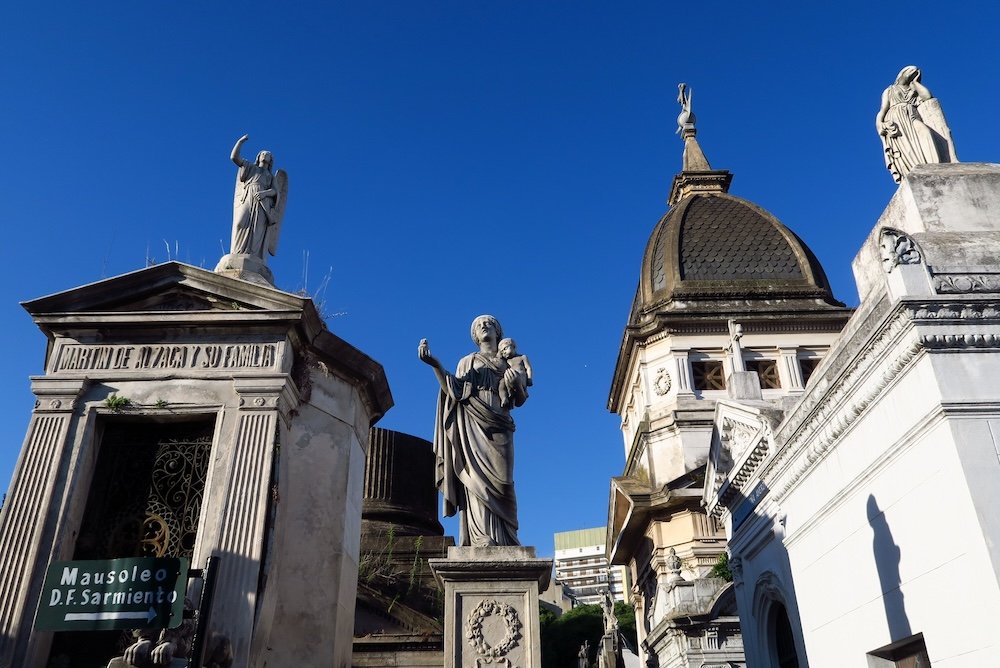
A Brief History of Recoleta Cemetery
Recoleta Cemetery was founded in 1822, making it the first public cemetery in Buenos Aires.
It occupies land that originally belonged to the adjoining Basílica Nuestra Señora del Pilar, and the surrounding neighbourhood eventually adopted the name Recoleta from the Recollect monks who once lived here.
In its early years, the cemetery was fairly modest, but during Argentina’s Golden Age (late 19th–early 20th century), Buenos Aires’ wealthy elite began transforming it into something extraordinary.
Inspired by European cemeteries like Père Lachaise in Paris, families competed to build the most elaborate mausoleums, hiring top architects, importing marble from Italy, and commissioning sculptures from Europe’s best ateliers.
By the turn of the century, Recoleta Cemetery had become a symbol of status and legacy. Presidents, generals, poets, aristocrats, and cultural icons were laid to rest here, their tombs often as grand as palaces.
In 1946, the cemetery was declared a National Historic Monument, cementing its role as both a sacred site and a cultural landmark.
Visitor Essentials
Before you start wandering the cemetery’s atmospheric alleys, here are a few practical details to help you plan your visit:
| Category | Details |
|---|---|
| 📍 Location | Junín 1760, Recoleta, Buenos Aires |
| 🕒 Opening Hours | Daily 7 a.m.–6 p.m. (check locally) |
| 💰 Entry Fee | Free for Argentines; small fee for foreigners (subject to change) |
| ⏱ Suggested Visit Time | 1–2 hours |
| 🗺 Tours | Free group tours or private guides available in English and Spanish (check schedule) |
| 🦽 Accessibility | Mostly flat but cobblestoned paths, so wear comfy shoes |
TIP: Early mornings and late afternoons are the best times to visit Recoleta Cemetery. You’ll find fewer tour groups, softer light, and a more peaceful atmosphere.
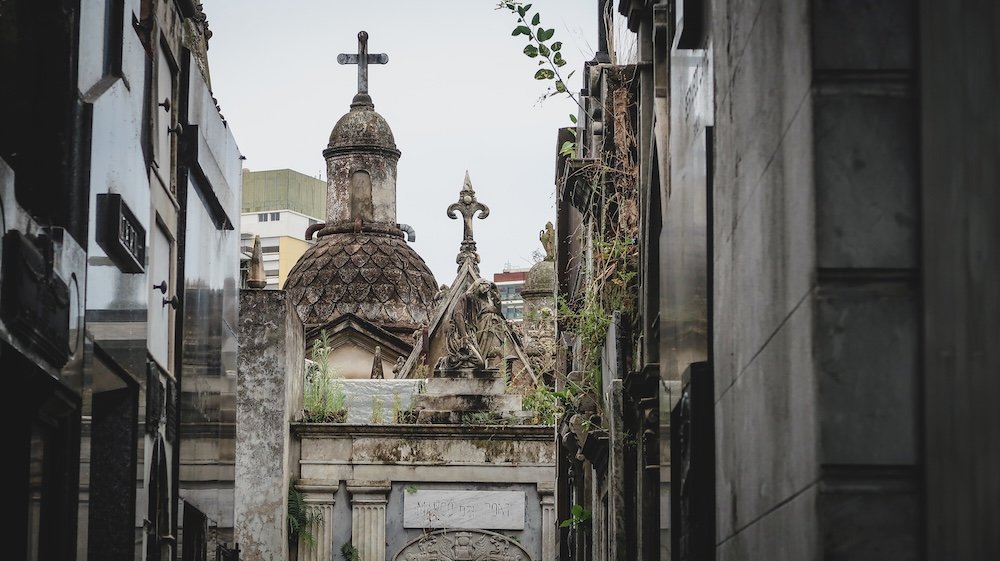
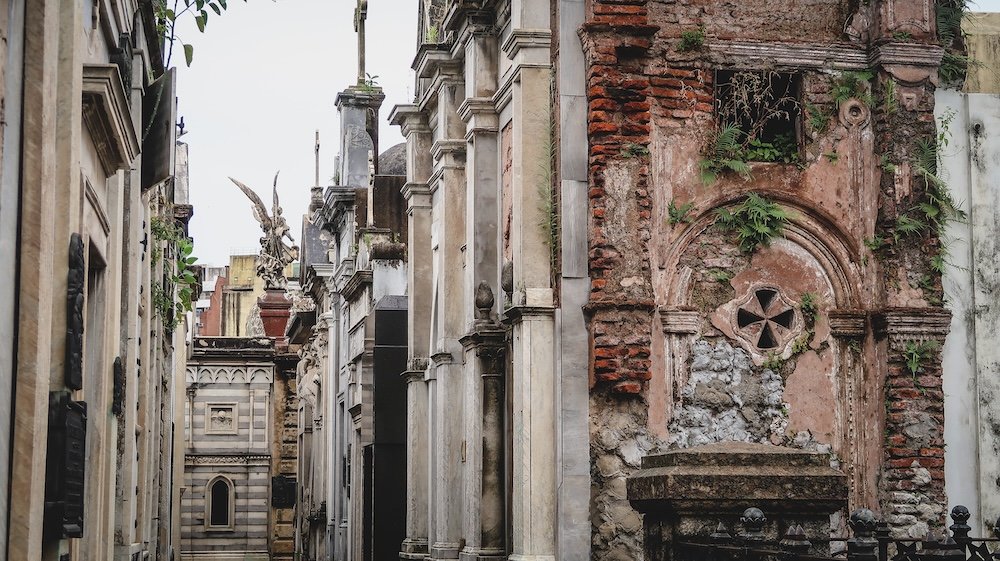
Layout & Atmosphere
Recoleta Cemetery covers around 5.5 hectares, with paths laid out in a grid system reminiscent of a small city. In fact, locals sometimes refer to it as a “city of the dead.”
The narrow cobblestone alleys are lined with more than 6,400 mausoleums, statues and chapels, some simple and others jaw-droppingly ornate. I was surprised to even see some coffins exposed to the elements; you get a sense of the passing of time here.
Architecturally, it’s a feast for the eyes. You’ll spot Neo-Gothic, Art Deco, Baroque, and Art Nouveau designs all within a few steps. Many of these tombs were designed by Argentina’s most celebrated architects and sculptors, and some were even imported directly from Europe.
One of my favourite things about visiting is the cats lounging on marble steps, though if you’re visiting now, you’re less likely to spot them! As it turns out, Recoleta’s strays have been getting adopted and this combined with a spay and neuter campaign has proven rather effective.
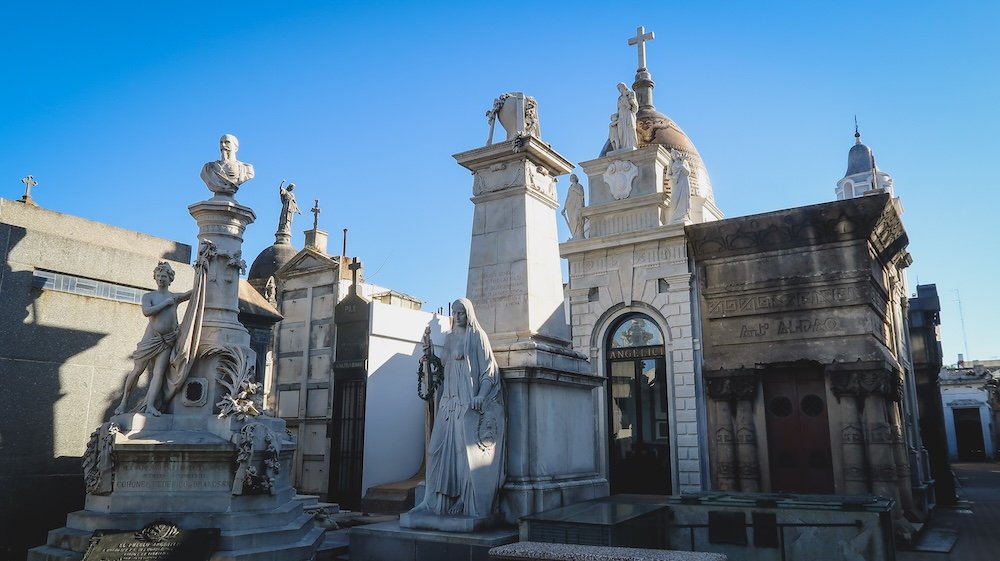
Notable Tombs & Points of Interest
While you could easily spend hours wandering aimlessly (and I recommend leaving a little time for that), there are a few key tombs and stories you shouldn’t miss:
Eva Perón (Evita)
The most visited tomb in the cemetery belongs to Eva Perón, Argentina’s beloved and controversial First Lady. Her remains rest in the Duarte family mausoleum, a surprisingly modest black marble tomb tucked along a narrow alley. There’s almost always a small crowd gathered, leaving flowers or snapping photos.
Rufina Cambaceres
Perhaps the most haunting story is that of Rufina Cambaceres, a young socialite who was allegedly buried alive after falling into a cataleptic coma in 1902. Her Art Nouveau tomb shows her elegantly opening a door, as if emerging back into life.
Admiral Guillermo Brown
Admiral Guillermo Brown was an Irish-born sailor who became the father of the Argentine Navy. His mausoleum stands out with its naval motifs and historic significance.
María Remedios de Escalada
María de los Remedios de Escalada y La Quintana was the wife of General José de San Martín, the liberator of Argentina, Chile and Peru. She was only 25 years old when she died. Her tomb is a simple and austere white marble with an inscription that reads, “Here lies Remedios de Escalada, wife and friend of Gen. S. Martín.”
Luis Ángel Firpo
Known as “The Wild Bull of the Pampas,” Firpo was a famous boxer whose bronze statue depicts him mid-punch.
Dorrego Ortiz Basualdo Family Mausoleum
This grand structure showcases French-inspired architecture at its most opulent. It is one of many tombs that feels more like a mini palace than a resting place.
David Alleno
Perhaps the most curious figure is David Alleno, the cemetery’s caretaker who spent his life saving money to build his own tomb, which features a life-size statue of himself holding keys. Legend has it he took his life right after it was completed so he could “move in” early.
TIP: Pick up a paper map at the entrance to help you find the key sites. The tombs aren’t always well signposted, and some of the most fascinating stories are down the quietest lanes.
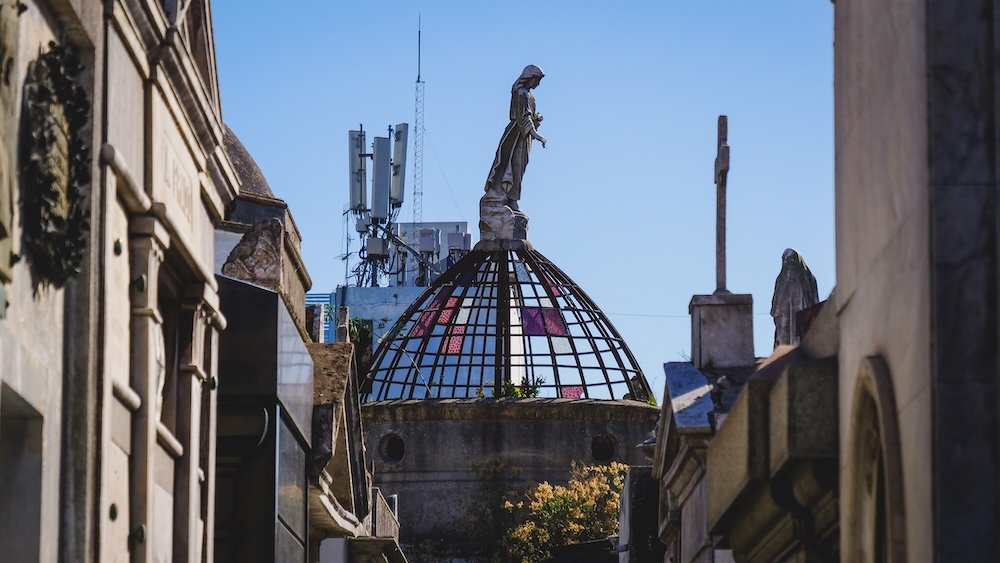
Tips for First-Time Visitors
- Wear comfy shoes because those cobblestones can be tricky after an hour of wandering.
- Bring water and sunscreen if visiting during the warmer months because there’s little shade.
- Photography is allowed and encouraged, but be respectful. Early morning and late afternoon are best for soft, golden light.
- Be mindful that this is still an active cemetery, so you may see families visiting loved ones.
- Take your time. Even if you’re not usually a “cemetery person,” the architecture and stories are genuinely captivating.
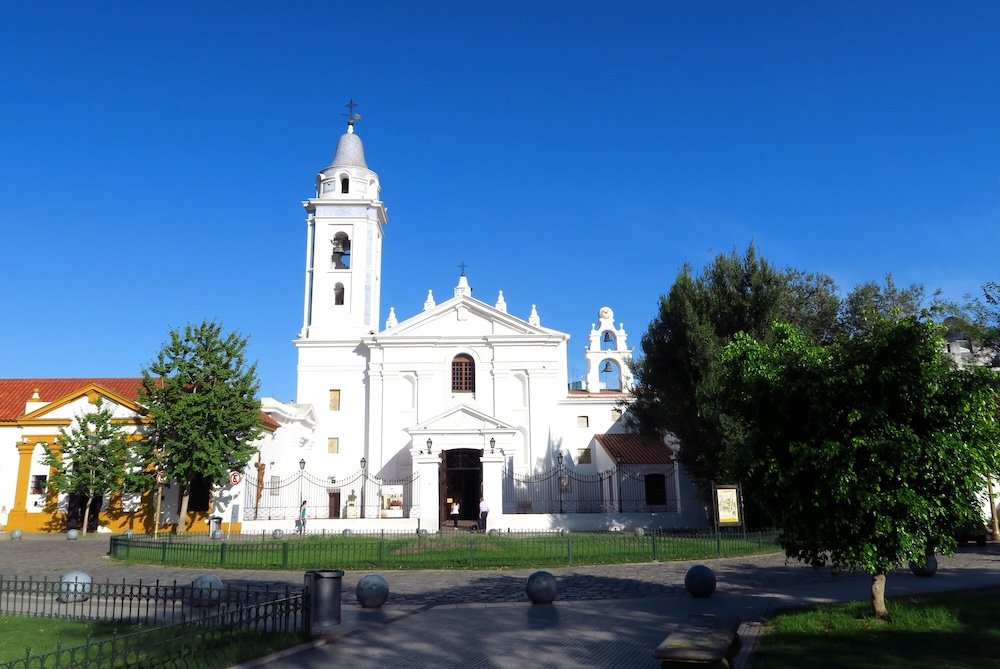
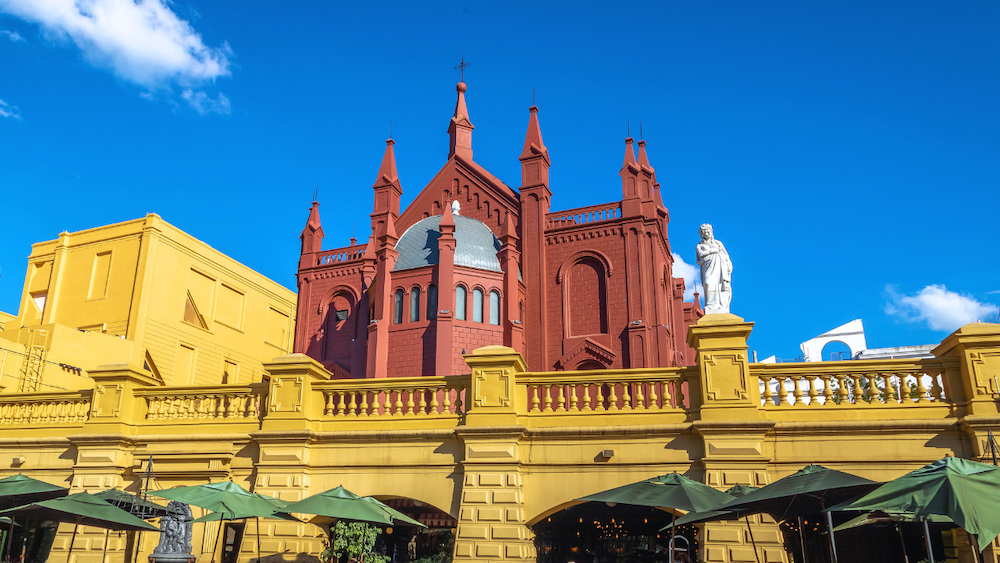
Nearby Attractions in Recoleta
Recoleta Cemetery is perfectly positioned to combine with other neighbourhood highlights, making for a great half or full-day itinerary.
- Basílica Nuestra Señora del Pilar – Right next door, this 18th-century colonial church is one of the oldest in Buenos Aires. Step inside for a look at its ornate silver altar and peaceful cloisters.
- Centro Cultural Recoleta – Housed in a former convent, this creative hub hosts rotating exhibitions, concerts, and workshops. Entry is usually free.
- La Biela Café – Just across the plaza, this iconic café is perfect for a post-tour coffee under the shade of a massive rubber tree.
- Museo Nacional de Bellas Artes – Argentina’s top fine arts museum is only a few minutes away on foot and is free to visit.
- Plaza Francia Artisan Market – If you’re visiting on a weekend, this lively market is a good spot to shop for handmade crafts and traditional Argentine souvenirs.
If you’re planning to spend the day in the area, check out my full neighbourhood guide to Recoleta for more ideas on where to eat, shop, and stay nearby.
And if you get caught with a rainy day in Buenos Aires, here are some activities to keep you busy and dry!
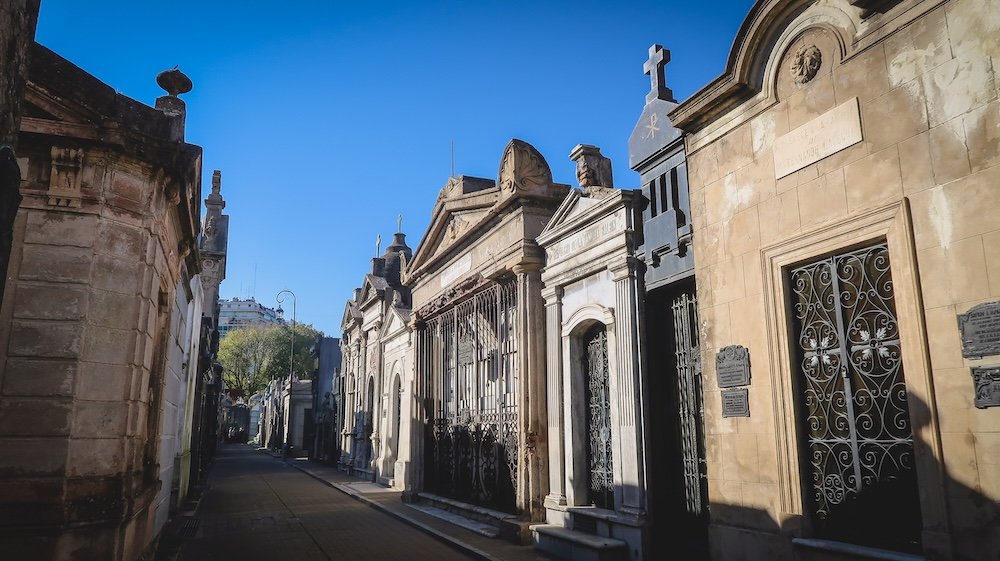
Recoleta Cemetery FAQs
Plan for 60–90 minutes. If you’re a photography or architecture fan, budget up to 2 hours to wander beyond the main lanes.
Generally 7:00 a.m. to 6:00 p.m. daily. Hours can change on holidays, so glance at the sign at the entrance or the city tourism site before you go.
It’s free for Argentine residents; foreign visitors may pay a small fee. This policy has changed over time, so bring a payment card or small cash just in case.
You can absolutely self-guide with a printed map or a phone map. History lovers will enjoy a guided tour (city-run or private) to unlock the best stories in less time.
Eva Perón (Duarte family mausoleum), Rufina Cambaceres, Admiral Guillermo Brown, Luis Ángel Firpo, the Dorrego Ortiz Basualdo mausoleum, and David Alleno’s self-statue are top highlights.
Early morning or late afternoon: softer light for photos, fewer groups, and cooler temperatures.
Yes, with a bit of storytelling. The “mini-city” layout, cats, and striking sculptures keep children engaged—just stick to main paths and set expectations about respectful behavior.
Paths are flat but cobblestoned. Wheelchairs and strollers can navigate the main avenues; narrower lanes can be bumpy. Wear comfortable shoes.
Yes, photography is welcome. Avoid flash inside chapels, don’t climb or touch monuments, and be mindful if families are visiting a grave.
No services inside. You’ll find cafés, kiosks, ATMs, and public restrooms just outside the gates (La Biela and Plaza Francia area are steps away).
Final Thoughts
Even if cemeteries aren’t usually on your travel list, Recoleta Cemetery is different. It’s part history book, part sculpture gallery, part architectural showcase, and it captures something essential about Buenos Aires’ past and identity.
I’ve visited multiple times over the years, and each visit reveals something new. So take your time, wander slowly, and enjoy the tranquility.
GROUP TOURS – If you’d rather join a group tour to travel in Argentina, check out Gadventures.
CAR RENTAL – To explore Argentina beyond the cities, the best way to do so is by renting a car. Discover Cars offers rentals across the country.
BUS TICKETS – Bus travel is a great way to see Argentina. BusBud offers numerous routes.
TRAVEL INSURANCE – Don’t leave on your trip without booking travel insurance. You can get a quote on SafetyWing.
HOTELS – Booking.com offers accommodations to suit all budgets and travel styles.
TOURS – For a variety of tours and activities, have a look at Viator.
